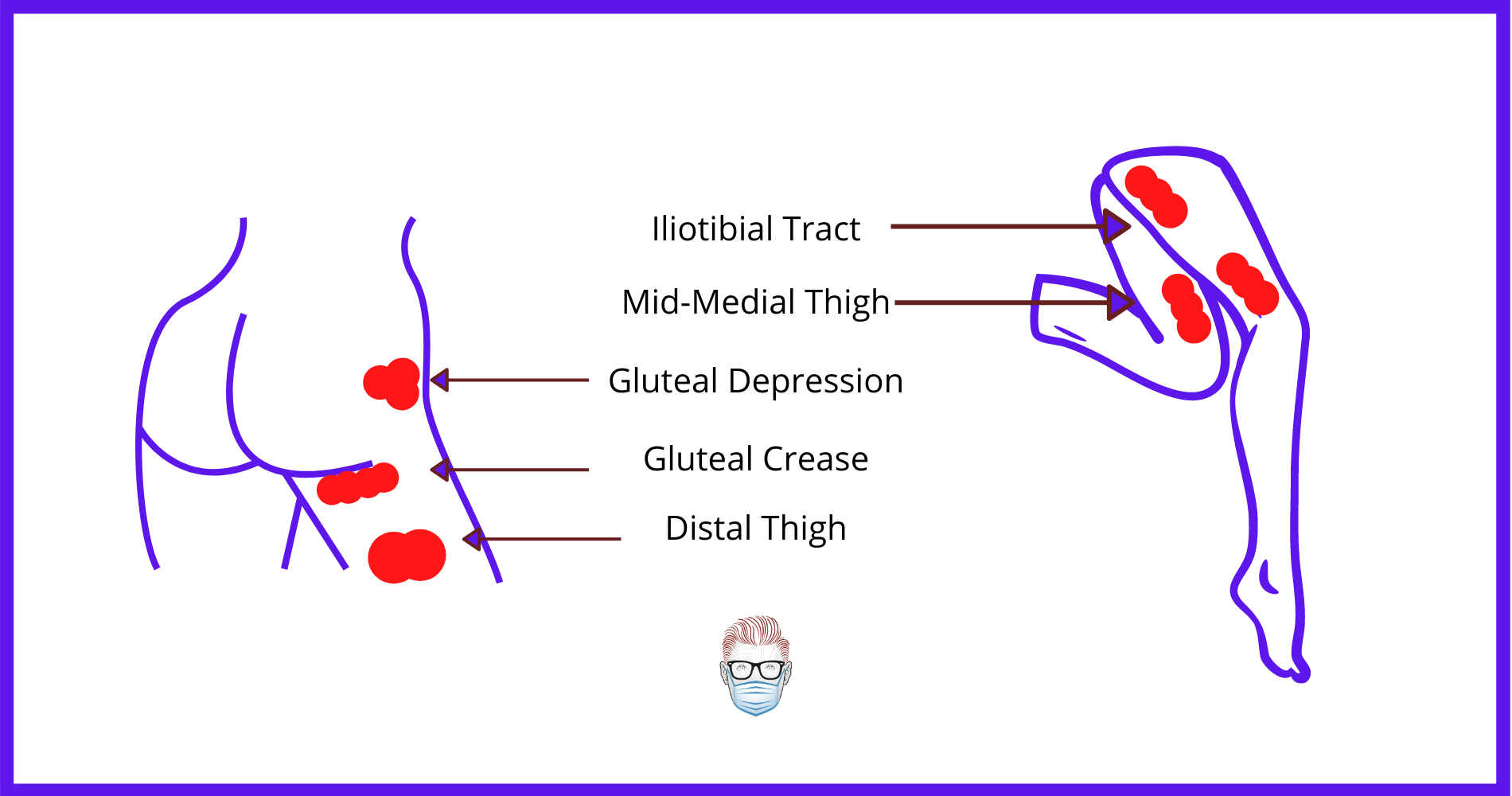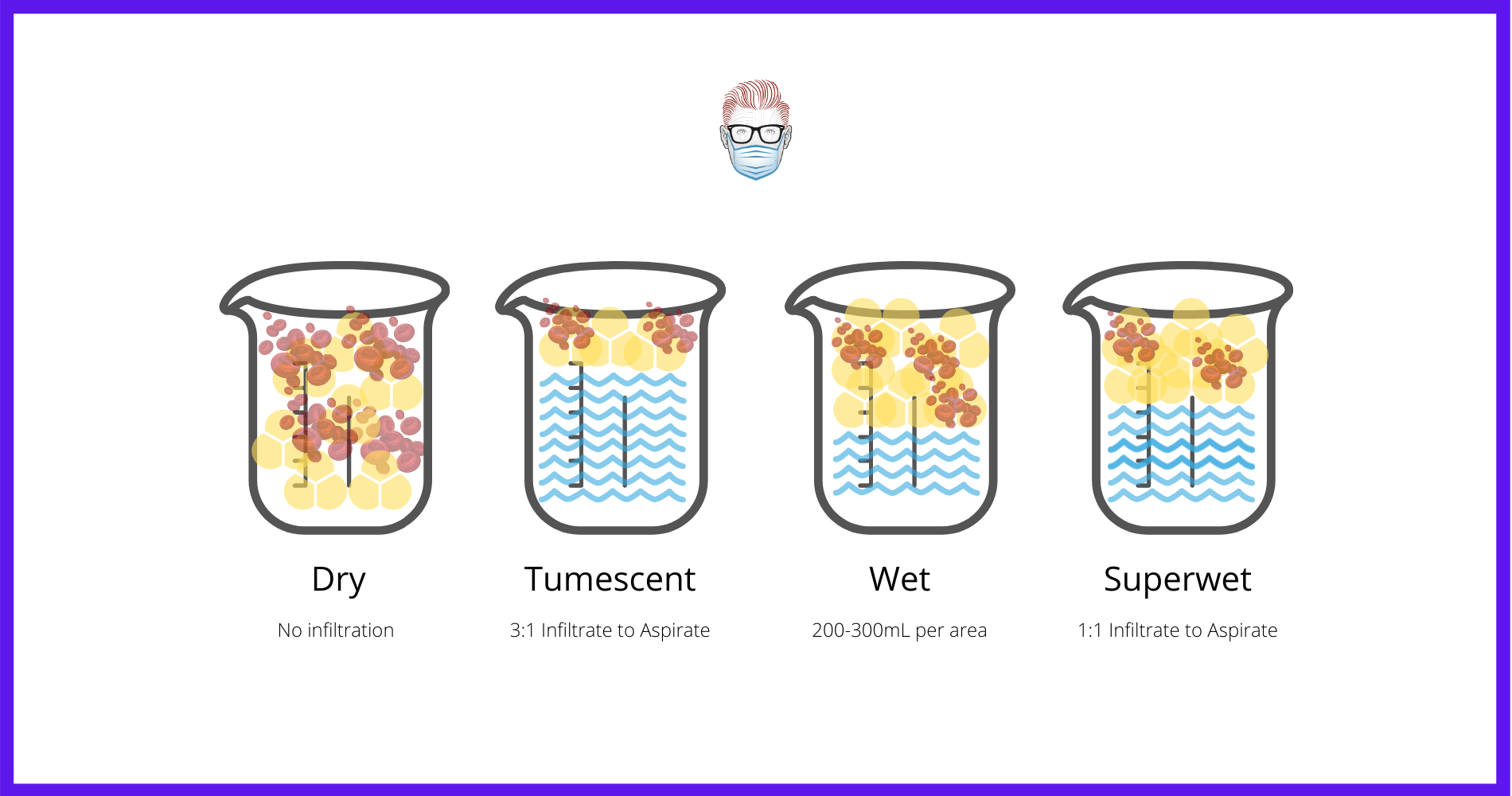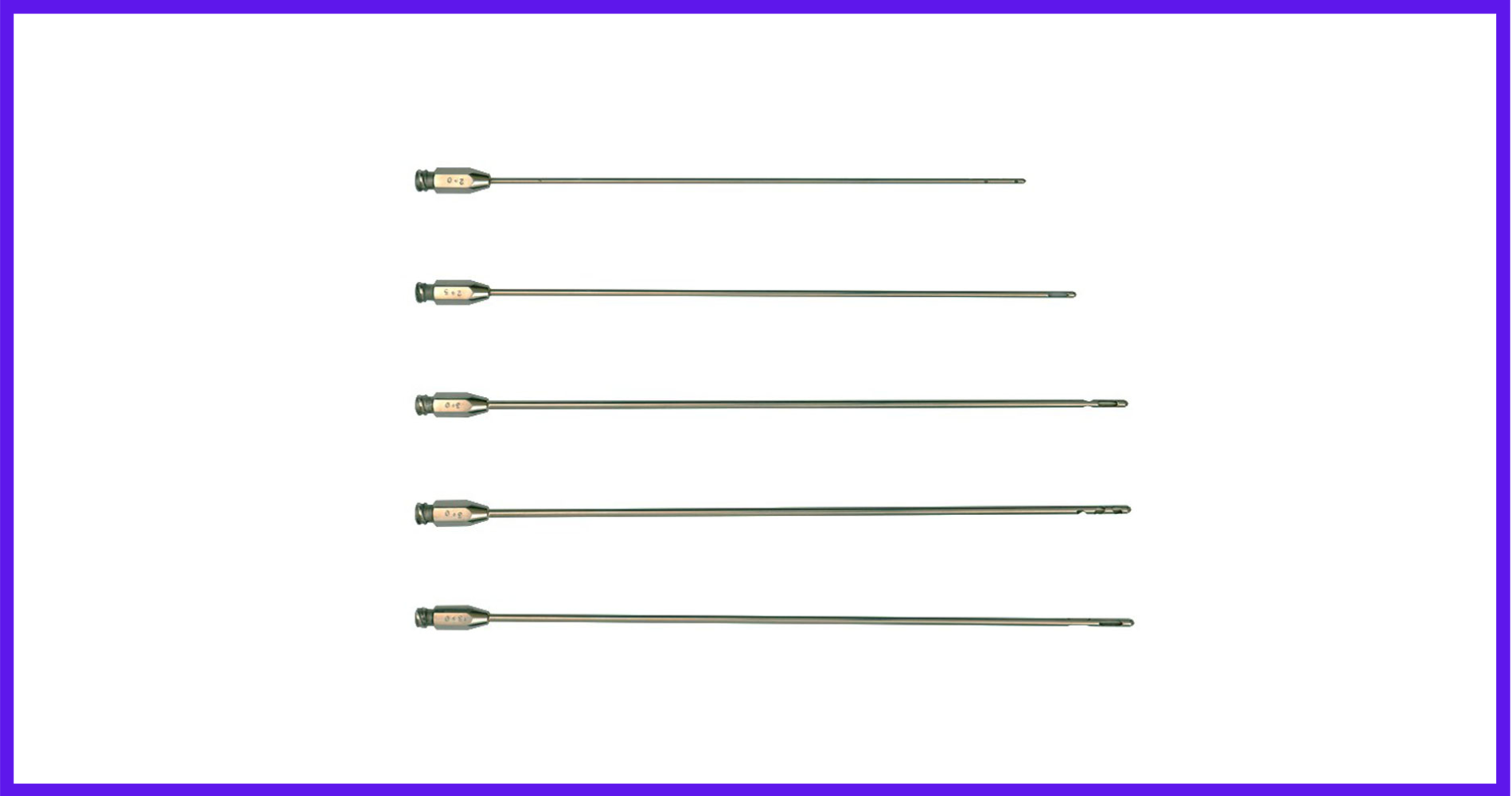In This Liposuction Article
- 5 Key Points
- Science of Liposuction
- Pre-Operative Assessment
- Techniques and Wetting Solutions
- Complications of Liposuction
- References
5 Key Points on Liposuction
- Anatomy of Liposuction: Fat is adipocytes organised into lobules, which create different layers of fat (apical, mantle and deep layers).
- Pre-operative Assessment: A detailed history to identify reasons for liposuction and specific examination to determine suitability for the procedure.
- Liposuction Techniques: can be classified into dry, tumescent, wet and superwet options containing different wetting solutions (Klein, Hundstat)
- Assistive Technologies: These exist to improve the emulsification and liquefication of fat and reduced surgical fatigue (for example - ultrasound, Vacuum, laster)
- Complications can range from contour deformities, self-resolving seromas to more serious issues such as VTE or fat emoblism.
Science of Liposuction
The core concept to understand is that liposuction is the removal of adipocytes in different layers of subcutaneous tissue.
Adipocytes
Liposuction removes adipocytes, which are often resistant to weight loss. A few points about adipocytes:
- Increase in number during adolesence.
- Increase in size during adulthood.
Layers of Fat
Adipocytes are structured into lobules organised by fibrous septa. This forms adipose tissue into different layers. Here are a few key points on the anatomy of adiopse tissue.
- Usually 3 layers of fat: superficialn (apical), middle (mantle) and deep.
- Each layer contains fat lobules (a collection of fat cells)
- Lobules are seperated by a fibrous septa (has neurovascular channels)
These fatty and fibrous properties vary throughout the body. For example:
- Limbs: loose fat and with minimal fibrous tissue.
- Back: compact fat organised by dense fibrous tissue.
Knowledge of this is important in the pre-operative clinical examination and during liposuction itself.
Pre-Operative Liposuction Assessment
The purpose of the pre-operative assessment is to gain insight into patients expectations, determine if suitable for liposuction, and flag any issues which can increase the risk of complications.
History
- Patient Motivations and Expectations
- Drugs, especially if increases risk of bleeding or lidocaine toxicity (SSRIs)1.
- Smoking cessation 4 weeks prior to surgery2.
Examination
- BMI (ideally within 30% of their ideal BMI)
- Surgical scars or hernias
- Skin Laxity (not improved by liposuction)
- Cellulites (can be exacerbated by liposuction)
- Quantify the extent of the diastasis recti and visceral fat component.
- Identify anatomical “zones of adherence" (areas of relatively dense fibrous attachments deep to the fascia, which help define natural body shape). If suctioned, these areas can lead to contour deformities3.

Liposuction Techniques and Solutions
Each surgeon has their own nuances when it comes to surgical technique and use different types of technologies to assist their liposuction. This is a broad overview of surgical considerations.
Liposuction Technique
The wetting solutions for liposuction can be simplified into 4 main groups: dry, tumescent, wet and superwet. They differ in the amount of infiltration and the degree of blood loss.

These are the 4 main types of techniques commonly used. In reality, plastic surgeons report using a wetting solution that is a variation of superwet anesthesia5. The major differences in the types and composition of solutions are detailed below.
Dry
- No infiltration
- Expected 25-40% blood loss in aspirated fluid4.
- No longer used in clinical practice.
Tumescence
- “True” tumescence is 3:1 infiltrate to aspirate under local anesthesia.
- Blood loss ~1% of the aspirate volume (similar to superwet)
- Also extra-vascular blood loss resulting in ~2% decrease in Hb/2500cc aspirate5.
Wet
- Regardless of amout aspirate, 200-300ml is injected per treatment area.
- Blood loss is ~4-30% of aspirate
SuperWet
- 1:1 infiltrate to aspirate ratio (1ml of solution for each 1mL suctioned)
- Blood loss ~1% of the aspirate volume (similar to tumescent)
- Decreases fluid requirements and potential surgical risks25
Composition of Wetting Solutions
There are two commonly used compositions
- Klein Solution: 1L Normal Saline, 500-100mg Lidocaine, 0.65mg Epinepgrine and 10mEq/L Sodium Bicarbonate
- Hunstadt's Solution: 1L Ringer's Lactate, 500mg Lidocaine, 1mg Epinephrine
The type of local anaesthetic uses is most commonly Lidocaine. This lipophilic drug becomes sequestered within fat cells, causing a slow release over 12-24 hours. It's important to calculate local anaesthetic doses and volumes.
Epinephrine is added to the infiltrate solution. Recommended dose of epinephrine <0.07 mg/kg, although doses as high as 10 mg/kg have been used safely6
Surgical Technique
Here is a rough guide to consider when performing liposuction.
- Incisions: placed in natural creases to minimize visibility.
- Cannulation: small-diameter blunt-tip cannulas, except in scarred areas. The smaller the cannula diameter, the larger amount of fat removed.
- Infiltration: tissue blanching and moderate tension are clinical endpoints7
- Layers: Deep and/or intermediate fat layer should be suctioned primarily14 sometimes superficial or subdermal is appropriate15
- Fluids: aim is to replace preoperative deficit and provide maintenance fluids. Different empiric formula's have been suggested16-18and this depends on large-volume (>5L) or small-volume liposuction.
- Post-Operative: Elastic Compression Garments19

Assistive Technologies
New technologies to assist in liposcution are often brought to market. It can be difficult to keep track, so here is a brief summary of common options.
- Suction Assisted: mechanical avulsion, simple and easy to set up.
- Power-Assisted: increases efficiency and decreases fatigue8
- Laser-Assisted: rupture of adipocytes, may help with emulsification, but evidence is equivocal9
- Radiofrequency-assisted: heats dermis, subcutaneous tissues and deep fat20
- Water-Assisted: better weight reten- tion, less apoptosis, and greater angiogenesis21
- Ultrasound-Assisted: vibrations emulsify fat to improve extraction and decrease blood loss22
- SAFE Liposuction: 3 step process of Separation, Aspiration and Fat Equalisation
A detailed review of these technologies is outside the scope of this article.
Complications of Liposuction
There can be intra-operative and post-operative complications of liposuction relating to both the surgery and anaesthetic. The most common complicatons are seroma, infection and contour irregularities.
Here is a list of other complications:
- Contour Irregularities (~3%)24
- Infection (~1%)23
- Haematoma (0.15%)10
- VTE (~0.06%)11,12,13
- Fat or Venous Embolism
- Seromas
- Local Anaesthetic Toxicity
- Fluid Overload
- Hyperpigmentation (more common in Ultrasound-Assisted)
- Perforation of viscera
.
Liposuction References
- Wrighton SA, Stevens JC. The human hepatic cytochromes P450 involved in drug metabolism. Crit Rev Toxicol. 1992;22:1–21.
- Rinker B. The evils of nicotine: An evidence-based guide to smoking and plastic surgery. Ann Plast Surg. 2013;70:599–605.
- Rohrich RJ, Beran SJ, Fodor PB. The role of subcutaneous infiltration in suction-assisted lipoplasty: A review. Plast Reconstr Surg. 1997;99:514–519; discussion 520–526.
- Rohrich, R. J., Smith, P. D., Marcantonio, D. R., & Kenkel, J. M. (2001). The Zones of Adherence: Role in Minimizing and Preventing Contour Deformities in Liposuction. Plastic and Reconstructive Surgery, 107(6), 1562–1569.doi:10.1097/00006534-200105000-00043
- Klein JA. The tumescent technique for liposuction surgery. Am J Cosm Surg. 1987;4:263–7.
- Lynch, D. J., Iverson, R. E., and the American Society of Plastic Surgeons Committee on Patient Safety. Practice ad- visory on liposuction. Plast. Reconstr. Surg. 113: 1478; discus- sion 1491; discussion 1494, 2004.
- Matarasso A. Superwet anesthesia redefines large-volume liposuction. Aesthet Surg J. 1997;17:358–364.
- Fodor PB, Vogt PA. Power-assisted lipoplasty (PAL): A clini- cal pilot study comparing PAL to traditional lipoplasty (TL). Aesthetic Plast Surg. 1999;23:379–385.
- Tark KC, Jung JE, Song SY. Superior lipolytic effect of the 1,444 nm Nd:YAG laser: Comparison with the 1,064 nm Nd:YAG laser. Lasers Surg Med. 2009;41:721–727.
- Hughes CE III. Reduction of lipoplasty risks and mortality: An ASAPS survey. Aesthet Surg J. 2001;21:120–127
- Kaoutzanis C, Gupta V, Winocour J, et al. Cosmetic lipo- suction: Preoperative risk factors, major complication rates, and safety of combined procedures. Aesthet Surg J. 2017;37:680–694.
- Grazer FM, de Jong RH. Fatal outcomes from liposuction: Census survey of cosmetic surgeons. Plast Reconstr Surg. 2000;105:436–446; discussion 447
- Prins MH, Hirsh J. A comparison of general anesthesia and regional anesthesia as a risk factor for deep vein thrombo- sis following hip surgery: A critical review. Thromb Haemost. 1990;64:497–500.
- Phillip J. Stephan, MD, FACS, Jeffrey M. Kenkel, MD, FACS, Updates and Advances in Liposuction, Aesthetic Surgery Journal, Volume 30, Issue 1, January 2010, Pages 83–97, https://doi.org/10.1177/1090820X10362728
- Gasperoni C, Gasperoni P. Subdermal liposuction: long-term experience. Clinics in Plastic Surgery. 2006 Jan;33(1):63-73, vi. DOI: 10.1016/j.cps.2005.08.006.
- Rohrich RJ, Leedy JE, Swamy R, Brown SA, Coleman J. Fluid resuscitation in liposuction: A retrospective review of 89 consecutive patients. Plast Reconstr Surg. 2006;117:431–435.
- Pitman GH, Aker JS, Tripp ZD. Tumescent liposuction: A surgeon’s perspective. Clin Plast Surg. 1996;23:633–641; dis- cussion 642.
- Matarasso A. Superwet anesthesia redefines large-volume liposuction. Aesthet Surg J. 1997;17:358–364
- Klein JA. Tumescent liposuction and improved postopera- tive care using tumescent liposuction garments. Dermatol Clin. 1995;13:329–338.
- Theodorou S, Chia C. Radiofrequency-assisted liposuction for arm contouring: Technique under local anesthesia. Plast Reconstr Surg Glob Open 2013;1:e37.
- Yin S, Luan J, Fu S, Wang Q, Zhuang Q. Does water-jet force make a difference in fat grafting? In vitro and in vivo evi- dence of improved lipoaspirate viability and fat graft survival. Plast Reconstr Surg. 2015;135:127–138.
- Fisher C, Grahovac TL, Schafer ME, Shippert RD, Marra KG, Rubin JP. Comparison of harvest and processing techniques for fat grafting and adipose stem cell isolation. Plast Reconstr Surg. 2013;132:351–361.
- Lehnhardt M, Homann HH, Daigeler A, Hauser J, Palka P, Steinau HU. Major and lethal complications of liposuction: A review of 72 cases in Germany between 1998 and 2002.Plast Reconstr Surg. 2008;121:396e–403e.
- Hanke CW, Bernstein G, Bullock S. Safety of tumescent liposuction in 15,336 patients: National survey results. Dermatol Surg. 1995;21:459–462.
- Prins MH, Hirsh J. A comparison of general anesthesia and regional anesthesia as a risk factor for deep vein thrombo- sis following hip surgery: A critical review. Thromb Haemost.1990;64:497–500.


